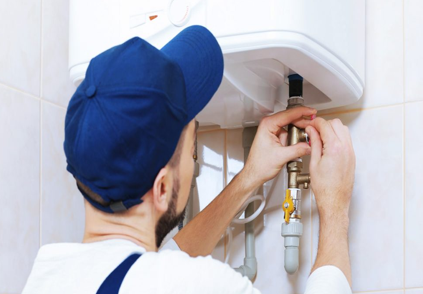Your home’s water heater is a crucial component. Unfortunately, many homeowners and handymen may go unnoticed with a malfunctioning or blocked water heater. If the actions are not immediately done to prevent injury from overheated water, they might not even be aware that their water heater will become a safety issue. This post is for you if you want someone to install your new water heater. I’ll provide you with clarity on your question, can a handyman install a water heater, making it more straightforward for you.
Can a handyman install a water heater? By replacing a water heater yourself, you can save money on plumbing fees if you have some basic plumbing skills. We’ll show you replacing a water heater for you. For all water heaters, the process is essentially the same. The gas and water connections are identical if you select a power vented gas water heater model, but there are various venting procedures. It’s a little simpler to replace an electric water heater. You don’t have to bother with gas piping or venting; all the water connections are identical.
What Services Does A Handyman Offer?
Handymen are precisely what their job title implies—handy. They provide a wide range of services, including carpentry, plumbing, electrical work, repairs, etc. Any home improvement project you have in mind is likely within the scope of a handyman. Therefore, the answer is, can a handyman install a water heater? Is probably yes. Your plumber ought to complete the task.
5 Indices That Your Water Heater Needs to be Replaced
1 – You don’t have to have Hot Enough Water
If family members are continually bickering over who gets the morning shower with the warmest water, your water heater might not be the proper size for your home. If this is the case, upgrading to a larger unit can frequently fix the issue.
2 – Your Water Isn’t Even Warm
No hot water can occasionally mean that a minor, easily fixable problem exists. This can occur with electric water heaters if the heating element breaks down or the electrical system malfunctions and stops heating the water. A gas supply shortage or a problem with the pilot light may be to blame for a malfunctioning gas water heater. But your unit probably has to be replaced if you’ve done all this and you’re still not getting hot water.
3 – It Producing Grunting Sounds
Pops, hisses, whistles, and other noises are familiar with water heaters. However, if your water heater makes a rumbling noise, you might want to look closer to see whether it needs to be replaced.
If you hear this noise, investigate if the tank’s bottom is rusted or dripping. If so, you will need to replace the entire device because the base is rusting.
4 – Leaking from the Tank
Unfortunately, once a tank begins to leak, its game over. You’ll need to replace a leaking water heater to get your water temperature back to where you need it.
5 – The Number of Years That Water Heater Has Been In Service
On average, water heaters only last 8 to 12 years, so if you haven’t replaced yours in the past ten years, it could be time.
What You Should Talk About With Your Handyman
Regardless of how well you maintain your water heater, it will eventually break down. You then need to get a new one fitted. A handyman can do the installation. However, before you spend that money, make sure your handyman is familiar with the following:
1 – Some Areas Require a Permit for the Installation of Water Heaters
This was covered earlier. An inspector will arrive once the installation completes the job to ensure it complies with regulations. You might have to take the system out and start over if not. That is why you need to confirm your installer can do the task. You shouldn’t make an upfront payment, and they ought to be certified.
2 – Talk with the Installer about What Size Water Heater You Need
Consider your household’s size and how much hot water you use.
- What is the number of washrooms in your home?
- How frequently do you do laundry?
- How many baths does each person take each day?
Your water heater should be on the larger side if you have a large family and a large home.
Units must be smaller for smaller dwellings. Your installer should be able to assist you in determining the amount of water heater your household need.
Large Family Water Heater
1 – Tankless water heater Stiebel Eltron 239223
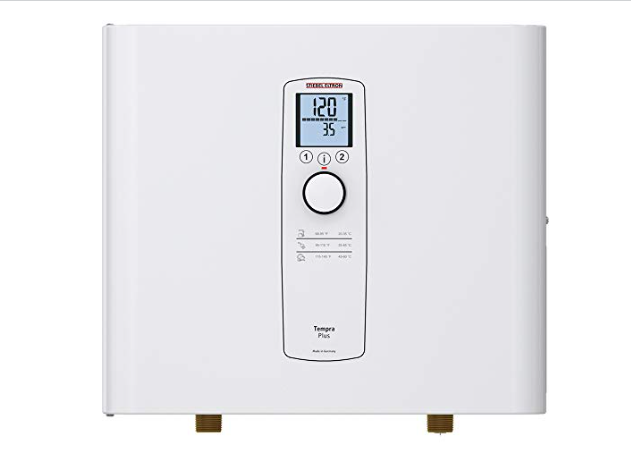
Comparing the Stiebel tankless water heater to traditional electrical tank water heaters, the tankless model uses 15 to 20% less energy. The Stiebel tankless water heater has an exclusive, sophisticated flow control system that regulates water temperature automatically for consistent comfort. To top it off, the Stiebel tankless water heater may lower the flow of hot water if demand exceeds capacity, ensuring that your hot showers won’t be interrupted.
2 – Tankless water heater Rinnai V65ip
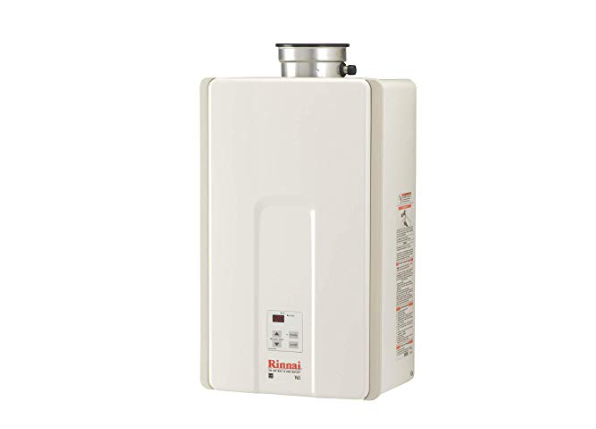
A tiny model constructed of steel is the Rinnai water heater. Because every component is reproducible and corrosion-resistant, you can quickly replace its pieces.
The Rinnai V65ip uses little energy. Because of its small size, it requires less energy, water, and carbon dioxide. Additionally, the Rinnai V94IN produces a staggering 9.8 gallons per minute, making it ideal for a big household. Even though the device weighs about 46.3 pounds (21.9 kilograms), making it possibly heavier than comparable products, its small size assures that it takes up less space.
Small Family Water Heater
1 – Bosch electric mini-tank water heater
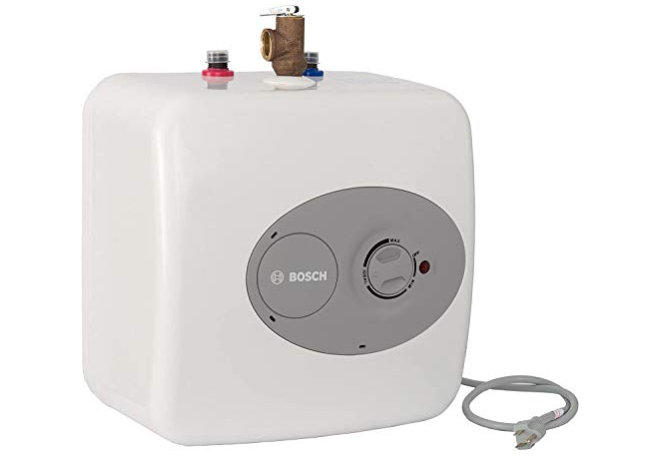
One of the most accessible water heaters is the Bosch Electric Mini-Tank. This piece of equipment, known as a point-of-use tank, fits neatly underneath your sink and provides hot water when and where you need it.
The Bosch Electric Mini-Tank can simultaneously supply water to two sinks. You are sure to be satisfied with a 98 percent thermal efficiency rating. In comparison to water heaters with more excellent durability, this device is not only simple to put up but also simple to maintain. You don’t need to be a plumber to understand how to use such a user-friendly water heater; if you’re prepared to invest ten minutes in learning a lesson, you can install it yourself.
2 – Gdrasuya10 110V Electric Water Heater
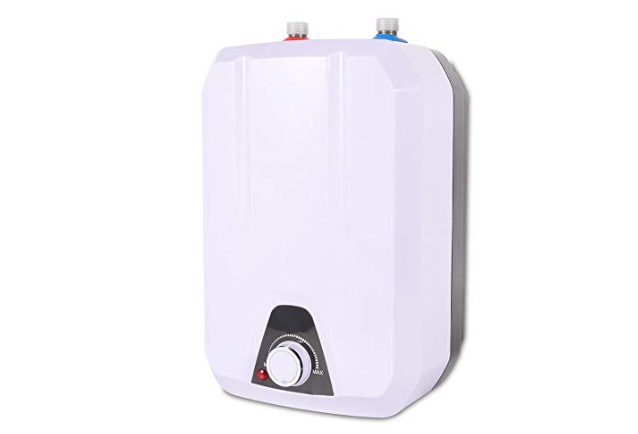
The Gdrasuya10 110V Electric Water Heater is a fantastic addition to your family home since it combines traditional design with inner quality. These water heaters are one step ahead of their gas-powered rivals by using environmentally friendly materials, yet they still provide enough hot water for every room in the house.
Although much smaller than some of the larger versions, this water heater is still far from being as small as a mini-tank or tankless unit. This water heater is excellent if you come from a multi-person household that frequently needs a lot of hot water, even though it may not be the most significant space saver. Additionally, it takes up less room because of its lightweight design.
Tools Necessary to Install a Water Heater
Before you begin, prepare the tools you’ll need for this DIY project. This will prevent you from having to waste time and trouble.
- Four-in-one screwdriver
- Valve for pressure relief
- A flexible wrench
- Tape for plumbers
- Cut tubes
- Electronic tape
- Security glasses
- A pipe wrench
- Solder
- A soldering iron
- Release pipe
- Wire cutter/stripper
- Measurement tape
- Fittings
- Tester for voltage
- Chemical for threading pipes
- Connections and venting pipe
- Water and gas piping
How to Install a Water Heater that Runs on Electricity
What You Should Know Before Having a Handyman Install Your Water Heater
Keep in mind that handling electricity might be hazardous.
- Ensure your handyman has the required credentials before allowing him to handle this. If you intend to perform it yourself, you should have previous electrical work experience.
- Remember that you may require authorization from the appropriate regulatory organizations in some places.
- You might also need to provide documentation that you can carry out this operation. Penalties could apply if you violate these guidelines.
It’s now time to install a water heater if you take care of everything mentioned above:
- Before you work, turn the power to your water heating equipment off.
- Fill up the tank.
- Use the procedures outlined in the section on draining gas water heaters to empty the tank.
- Unplug the wiring.
- To install your water heater, follow the directions in the manual. Ensure the old fuse, and circuit breaker rating can support your new water heater before you start.
- Additionally, ensure a shutdown mechanism is placed close to the new unit.
- The wires might not reach if you switch to a new brand or model of the water heater. Install an electrical 4-by-4-inch metal box close to the unit. A ceiling mount will also work, but a wall mount is an option.
- To the electrical box, connect the old cables. Run a fresh section of electrical conduit or armored cable to the device.
Make Sure Your Water Tank Is Ready Before Replacing It
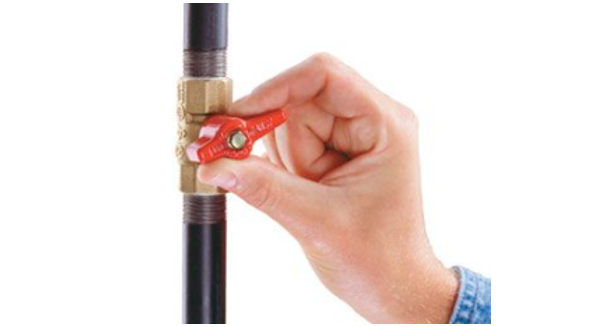
A water heater installation can be challenging and complicated. It’s not just something you can switch on and off using the gas welding techniques you learned in fifth grade. You can learn everything you need to know about can a handyman install a water heater in this article.
Gas and electricity-powered water heaters both adhere to the same procedures.
1 – Turn off the Gas and Water
Turn off the gas supply line supplying your water heater before you start operating.
- We should turn the handle until it forms a 90-degree angle with your pipe.
- Additionally, shut off the water supply mainline.
- To ensure there is no water in the pipes, open a faucet. If your basement has a tap, use it. If your home doesn’t have a basement, a room on the ground floor will do.
2 – Empty the Tank
The water inside the tank could be highly heated. You may always get burned by it.
- You can wait for the water to cool if you have the time. If not, attach a hose to the tank’s drain valve (garden hoses work nicely).
- Once the hose connection is stable, open the valve.
- Do not open the drain valve if that connection has not yet been made.
3 – Water Supply Lines Should Be Shut Off
- We can disconnect the venting pipe from the vent hood by unscrewing it.
- Set it apart.
- We should cut the hot and cold water pipes with a tube cutter. Unscrew the fasteners on the flexible connectors if you are using them.
- Now that the new water heater is in place, you may slide the old one out of the way.
4 – Install the New Temperature and Pressure Relief Valve
- Use Teflon tape to secure the threads on your new relief valve.
- We should turn the tape three times. Using your pipe wrench, attach the valve to the tank.
- Put a discharge pipe there. The drain pipe needs to be made of copper.
Installing a Gas Water Heater: How to Do It?
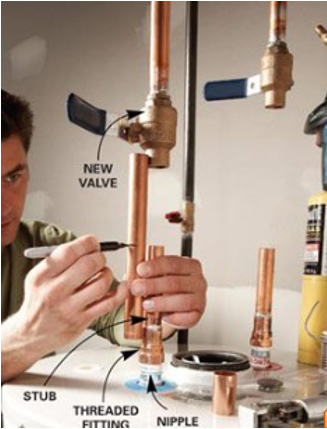
These steps will show can a handyman install a water heater. How to replace water heaters that use natural gas. However, the procedure for replacing propane-powered water heaters is the same.
1 – Join the Pipe Assembly
- You require a fresh pair of copper adapters for this step.
- To 6-inch lengths of 3/4-inch copper pipes, solder these adapters.
- Install the assemblies in both the cold and hot water inlets and outlets. These apertures are located on the tank’s top.
- The short, plastic-lined nipples can be used as a barrier against corrosion.
- In some regions, this step might not be necessary. But they should always use it in homes with hard water.
2 – Join the Water Supply Lines
You get to install your new water heater in this step.
- The old pipe should be extended or recut to fit with the new.
- To secure the tubing, use a soldering gun and solder.
- Use the copper slip connections for this, and make sure to solder them correctly.
- It could be challenging to align the tubing. Despite this, there is absolutely no need for alarm.
- As you need to make the appropriate modifications, use elbows at a 45-degree angle.
3 – Reinstall the Vent
- Drill three holes in the hood to reinstall the vent.
- Make sure the fit is snug by pushing the vent over the hood.
- Use sheet metal screws with a diameter of 3/8 inches to fasten it.
- Before the first elbow, make sure your vent rises around 12 inches vertically.
4 – Use Two Wrenches to Secure the Gas Supply Line in Place
When performing this step of the work, exercise extreme caution.
- Using both pipe wrenches can keep the valve from being stressed.
- Apply a pipe joint sealant or compound to the threaded ends of the gas line.
- Insert the first nostril into the gas valve of the apparatus.
- Use both pipe wrenches to avoid stressing the valve.
- Finish utilizing the union by placing the remaining nipples.
5 – Turn on Your Main Water Supply Line
If you have never closed the drain valve after emptying the tank, you should do it immediately.
- To feed the tank, close the valve and open it again.
- Open the cold water valve to fill the tank, but turn on the hot water tap next to your water heater instead. Keep these pipes unlocked so that the water can flow for a while.
- Check each fitting and joint while the water is running and the tank is filling.
- A leak should not exist.
6 – Watch Out For Back-Drafting
Most water heaters draw combustion gases through the flue using natural airflow. The fumes will flow back inside your house if the draft fails. These gases might be toxic. Back-drafting is what I’m referring to here. Therefore, once you’ve finished installing the water heater, be sure there aren’t any fumes coming back into your house. How you carry it out:
- Turn on the exhaust fans in your bathroom and kitchen but close any windows and doors leading outside.
- Open a nearby hot water faucet. Keep it running until your water heater burner ignites. You should hear it.
- Wait a minute, then strike a match. Blow out the game, then blow the smoke towards the direction of the hood vent. If your connection is proper, smoke should rise through the flue.
- If that doesn’t happen, the burner’s exhaust won’t either, which is a problem.
- It will descend again and move throughout the house, which is hazardous.
- Cut off the gas supply line and seek help from a different expert.
7. Look for Gas Leaks
If your system passed the previous one, only proceed to this one. We can use a gas leak detector for this stage. You can still clean with soap and water if you don’t have this item.
- Activate the gas supply to your water heater. It will take a few seconds for the gas to start flowing.
- Hold the lead close to the joint while activating the gas detector. You have a gas leak if you receive a reading.
- This is what you do if you don’t have a gas detector.
- Combine soap and water in equal parts. Along the joints where the gas flows, move the mixture. The mixture will start to bubble if your appliance is leaking.
- Reverse the gas again. Retighten the joints if you can. Try reconnecting the lines once more if this doesn’t work.
Turn off the system and call another expert if the leak persists.
8 – Start the Engine
To light, the pilot adheres to the manual’s directions.
- Inspect your work with an electrical inspector if electricity powers your water heater.
- Before you switch on the mains for your water heater, check your connections.
- To set the temperature where you want it, follow the directions in the manual.
- After starting the pilot, only alter the temperature.
These directions are simple to understand. However, the installation should seek outside assistance if they encounter any problems.
How Long Will The Installation Take?
The business where you purchased your unit will probably offer to install it for you. These people are experts and will work within a deadline. Additionally, they will remove your old unit for you at no additional expense.
They usually arrive right away to perform the installation. But this time, it’s all about the handymen. You’ll need to hire someone as soon as possible to complete the installation. But it shouldn’t take more than three hours to complete your installation. Expect to pay more if your handyman removes the old system for you.
Conclusion
In the past, you had to engage a professional to install your water heater. There are tasks you can perform today on your own that won’t set you back a fortune and will help you save money. Anyone who wishes to install a water heater in their home can get help from this article. You’re not sure if you even need a water heater, but you still want to install one. Not to worry! Can a handyman install a water heater is a brief instruction. Make your project simple by buying the proper size, gas, and supplies.
Frequently Asked Questions
A: As new gas and water, we must install lines, the more labor-intensive setup results in a higher price. We must build new electric wiring to use electrical tankless heaters.
A: You can swap out the electric water heater on your own if your demands alter before then, it breaks, or you simply want an improvement. A dedicated electric wire and a cold-water supply line are required if you want to install a new electric water heater or replace an existing one that is failing.
A: Is it Possible to Install Water Heaters in a garage? Your water heater can be installed in the garage, yes. If we have a water heater installed in garage. A garage is a fantastic place for a water heater if there isn’t a suitable position elsewhere in your house.
